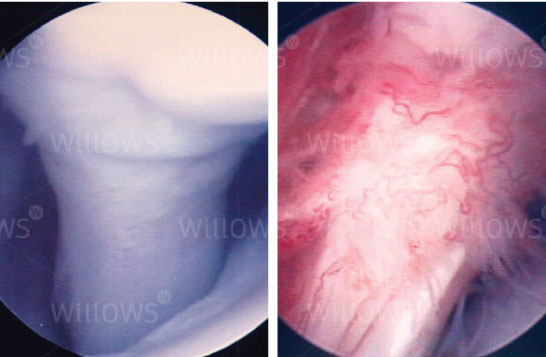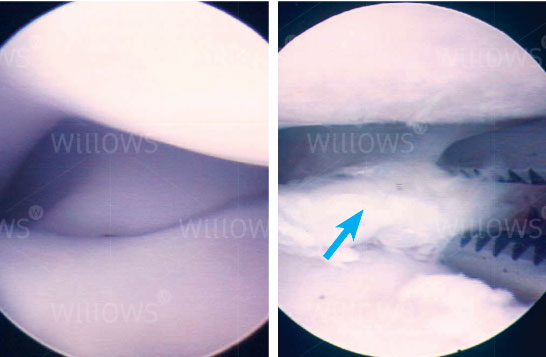Why Should I Bring my Pet to Willows for Arthroscopy?
Willows is one of Europe’s leading small animal Orthopaedic referral centres treating over 1000 new patients a year. Our state-of-the-art hospital is led by internationally renowned Specialists committed to providing the highest standards of care.
Our Orthopaedic Surgeons are supported by our multi-disciplinary team of Specialists across a number of disciplines including; Anaesthesia, Diagnostic Imaging and Emergency and Critical Care. Willows has a large dedicated team of Nurses and clinical support staff available 24 hours a day, every day of the year to provide the best possible care for your pet.
What is Arthroscopy?
Arthroscopy is a technique for examining the inside of a joint using a small telescope and camera. This allows detailed assessment of the joint in a minimally invasive fashion, avoiding some of the risks and discomfort that can be associated with traditional, more extensive ‘open’ surgery. An arthroscopy is often performed to gather information to help make a diagnosis and decide on treatment options and the outlook. In other situations, arthroscopic surgery is performed to treat a particular problem.
When is Arthroscopy Performed?
Arthroscopy is most commonly performed on the elbow for investigation and treatment of elbow dysplasia, and on the shoulder for conditions such as osteochondrosis, biceps tendon tears and ligament ruptures. Arthroscopy may also be used in the knee (stifle), and less commonly the hip, wrist (carpus) and ankle (hock) joints.

What is Involved in Arthroscopy?
Arthroscopy is performed with the patients under general anaesthesia. The hair over the affected joint is clipped and the skin cleaned. Small incisions, or portals, are then made into the joint to allow introduction of fluid and the telescope and instruments. Different sizes of telescope ranging from 1.9mm to 2.7mm diameter are used depending on the joint involved and the size of the patient. Because the telescopes and instruments are so small, the incisions into the joint only need to be a few millimetres long. As a result, any discomfort after the operation is minimised and recovery can be rapid.
Pic 1: Normal and inflamed biceps tendons in the shoulder joint


What can I Expect if my Pet has an Arthroscopy?
Arthroscopic surgery is minimally invasive, and so the recovery tends to be quick. Most patients are discharged from the hospital within 24 hours of the procedure. There is inevitably some mild discomfort after the operation, which usually subsides over a couple of days and is easily controlled with painkillers. Most dogs will need to be restricted to walks on the lead for a week or so to allow healing of the skin incisions; skin sutures are removed after 10-14 days. Depending on the underlying problem in the joint, additional aftercare may be needed, Physiotherapy or Hydrotherapy may be recommended or the ongoing management of osteoarthritis.
Risks of arthroscopy can include infection and anaesthetic complications, however these are extremely rare.
Pic 2: Normal elbow joint and an elbow with a fragmented coronoid process being removed with forceps (arrow)
To save this page as a PDF, click the button and make sure “Save as PDF” is selected.
Orthopaedics
Find out more
To assist owners in understanding more about Orthopaedics we have put together a range of information sheets to talk you through the some of the more common orthopaedic conditions seen and treated by our Specialists.

